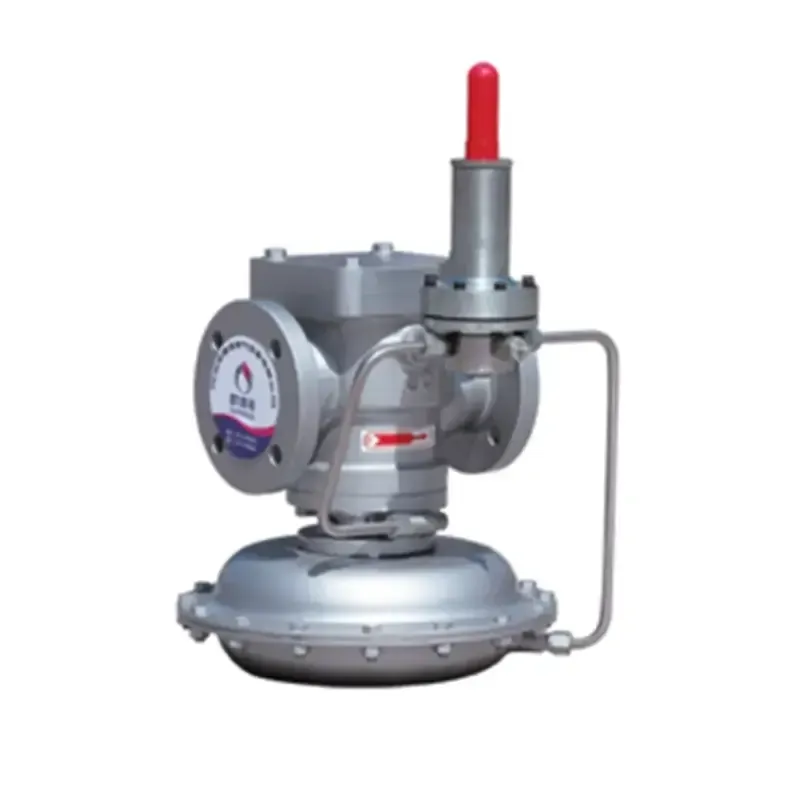
Jan . 02, 2025 06:41
Back to list
pressure reducing valve
Understanding Pressure Reducing Valves Function, Types, and Applications
Pressure reducing valves (PRVs) are crucial components in various fluid systems, primarily designed to maintain a desired pressure level downstream, regardless of fluctuations in upstream pressure. These valves play an essential role in ensuring safety, efficiency, and functionality in a diverse range of applications, from industrial processes to residential water systems.
Function of Pressure Reducing Valves
The primary function of a pressure reducing valve is to lower the high pressure from a source (such as a water supply line or gas main) to a more manageable level that can be safely used by downstream equipment or processes. By automatically adjusting to changes in both inlet pressure and flow rate, PRVs provide a stable output pressure, which is essential for protecting sensitive equipment, reducing wear and tear, and preventing potential leaks or failures in the system.
Mechanism of Operation
PRVs operate based on the principle of balance between two forces the upstream pressure and the spring tension. When the upstream pressure exceeds the set pressure level, the diaphragm within the valve moves, counteracting the spring force. This movement allows the valve to open and release excess pressure, which in turn lowers the pressure at the output. As the output pressure reaches the set point, the valve closes gradually until a balance is achieved. Any increase in downstream demand triggers the opening of the valve once again to maintain the desired output pressure.
Types of Pressure Reducing Valves
Pressure reducing valves come in various types, each designed for specific applications
1. Direct-acting PRVs These valves are the most common and operate directly based on the pressure differential across the valve.
2. Pilot-operated PRVs These are more complex and use a small pilot valve to control the larger main valve. They are typically used in high-pressure applications and can handle larger flow rates.
3. Electronic PRVs With advancements in technology, electronic pressure reducing valves have emerged. These use sensors and control systems to provide precise pressure regulation and are often employed in critical applications where exact pressure control is necessary.
Applications of Pressure Reducing Valves
PRVs are widely used in various sectors, including
pressure reducing valve

- Water Supply Systems In municipal water systems, PRVs ensure that the water pressure delivered to homes and businesses is safe and consistent, preventing pipe bursts or leaks caused by excessive pressure.
- Industrial Processes Many manufacturing processes require precise pressure levels for optimal operation. PRVs protect equipment and ensure proper functioning in systems like boilers, cooling systems, and process piping.
- Oil and Gas In the oil and gas industry, pressure reducing valves are critical for managing the vast pressures found in pipelines, ensuring safety and operational efficiency.
- Heating Systems In heating systems, such as steam and hot water applications, PRVs help maintain consistent pressure to avoid fluctuations that could lead to system failure.
Benefits of Using Pressure Reducing Valves
The incorporation of PRVs into fluid systems offers numerous benefits
- Safety By maintaining safe pressure levels, PRVs help prevent accidents and equipment damage.
- Efficiency Reducing pressure to optimal levels can lead to reduced energy consumption and improved system efficiency.
- Longevity of Equipment By preventing excessive pressure surges, PRVs contribute to the prolonged lifespan of equipment and piping systems.
- Cost Savings By minimizing leaks and reducing energy consumption, PRVs help facilities save on maintenance and operational costs.
Conclusion
In conclusion, pressure reducing valves are indispensable in modern fluid management systems. Their ability to automatically regulate pressure not only enhances safety and efficiency but also ensures the longevity of equipment in various applications. Understanding the function, types, and benefits of PRVs is vital for anyone involved in the design, operation, or maintenance of fluid systems. As industries continue to evolve, the role of pressure reducing valves will undoubtedly remain critical in achieving optimal performance and safety in fluid management.
Next:
Latest news
-
Safety Valve Spring-Loaded Design Overpressure ProtectionNewsJul.25,2025
-
Precision Voltage Regulator AC5 Accuracy Grade PerformanceNewsJul.25,2025
-
Natural Gas Pressure Regulating Skid Industrial Pipeline ApplicationsNewsJul.25,2025
-
Natural Gas Filter Stainless Steel Mesh Element DesignNewsJul.25,2025
-
Gas Pressure Regulator Valve Direct-Acting Spring-Loaded DesignNewsJul.25,2025
-
Decompression Equipment Multi-Stage Heat Exchange System DesignNewsJul.25,2025

